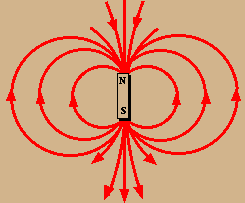Photons are slippery fellas. Since they don’t have any electrons, they’re free to run through any matter, no matter how intense an electric field may be. Scientists at Stanford, however, have come by a monumental breakthrough after they devised a way to exert virtual force on photons using synthetic magnetism similar to the effect of magnets on electrons. The findings could lead to a whole new generation of highly efficient electronics.
“This is a fundamentally new way to manipulate light flow. It presents a richness of photon control not seen before,” said Shanhui Fan, a professor of electrical engineering at Stanford and senior author of the study.
A fundamental principle of electronics is the ability to maneuver electrons through a given path. When an electron is met with an magnetic field, it will travel along the lines where resistance is lowest, typically in a circular path around the field. In a similar manner, the Stanford researchers have successfully managed to send photons in a circular motion around the synthetic magnetic field.
Key to their attempt were photonic crystals – materials that can confine and release photons

Apparently, in their breakthrough, the scientists managed to break the law as well. Don’t call the police just yet – the laws of physics that is. A key postulate in physics, the time-reversal symmetry of light, was broken by the researchers after they introduced a charge on the photons that reacts to the effective magnetic field the way an electron would to a real magnetic field. What this means, for engineers at least, is that a photon travelling forward will have different properties than when it is traveling backward, opening a whole new spec of technical possibilities.
“The breaking of time-reversal symmetry is crucial as it opens up novel ways to control light. We can, for instance, completely prevent light from traveling backward to eliminate reflection,” said Fan.
Think of optical fibers, which although fast for data transmission, still reflect plenty of light and cause noise and distortion of the signal.
“Despite their smooth appearance, glass fibers are, photonically speaking, quite rough. This causes a certain amount of backscatter, which degrades performance,” said Kejie Fang, a doctoral candidate in the Department of Physics at Stanford and the first author of the study.
In essence, once a photon enters the new device it cannot go back. This means a whole new generation of electronics based on light, instead of electricity, could be developed ranging from accelerators and microscopes to speedier on-chip communications.
Findings were reported in the journal Nature Photonics.
source






